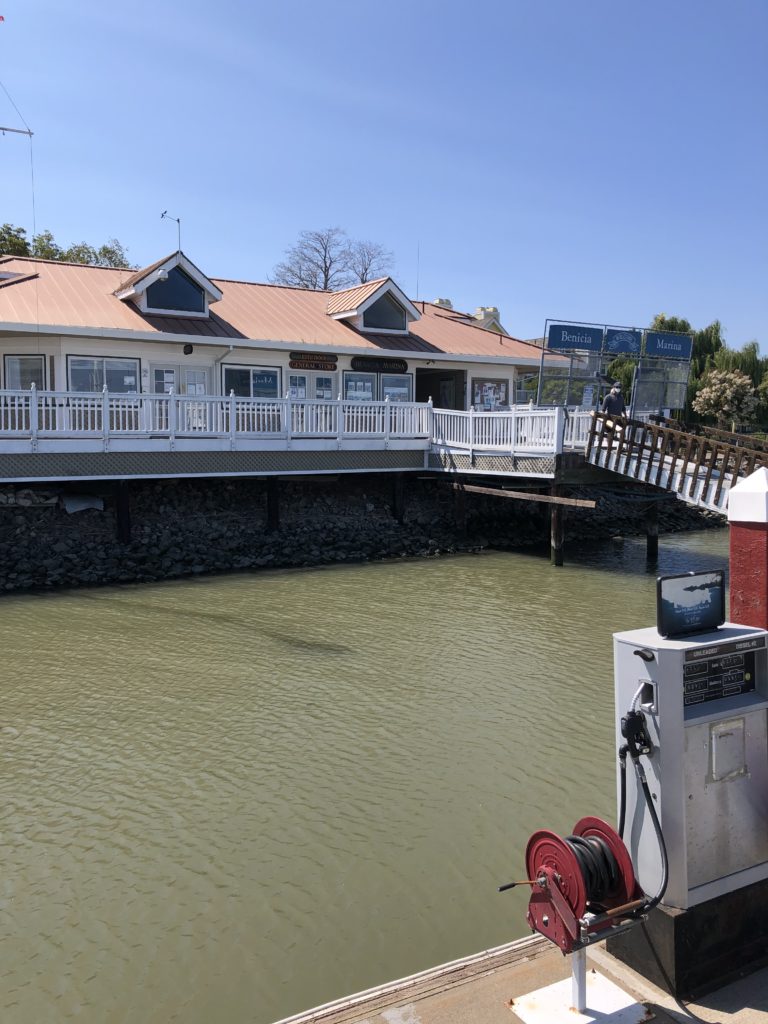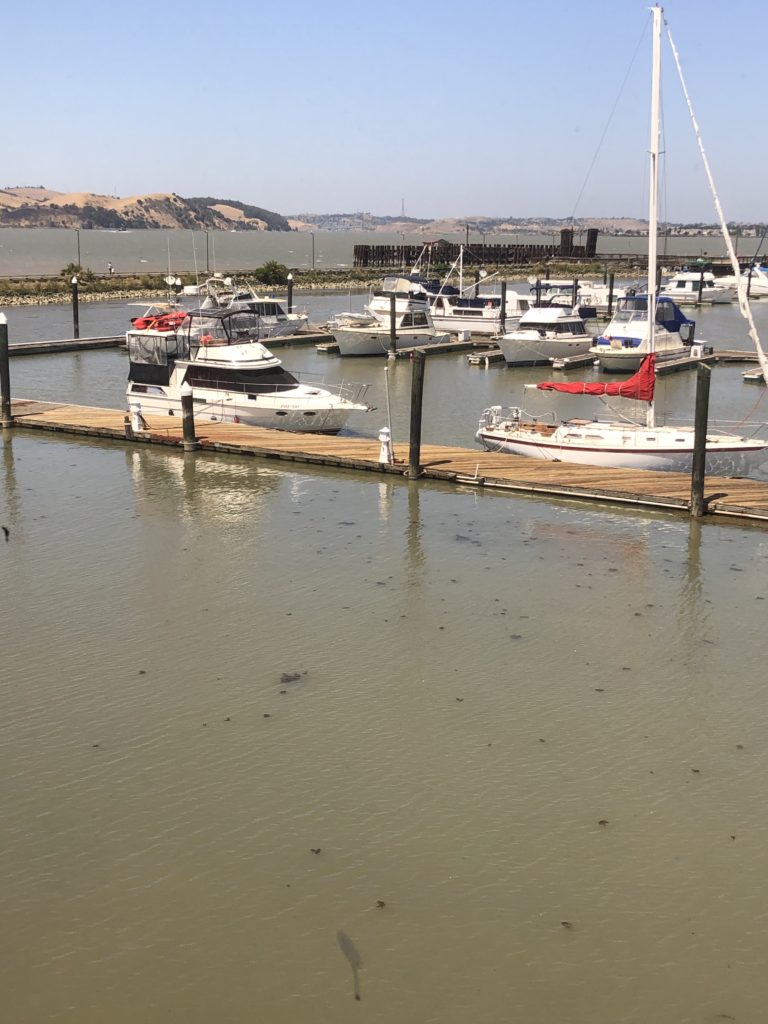Cruisers Are, By Definition, Liveaboards
Finding Extended Stay Berthing When You’re Labeled “Liveaboard”
What’s The Difference Between “Transient” and “Liveaboard”
Why be concerned about these labels? How do marinas treat them differently?
The biggest difference is time, followed by cost. A transient cruiser is limited to a certain number of days and, like hotels, there are check out times, too. A transient cruiser is going to pay a daily fee. Usually between $35 and $45 per day. A liveaboard will pay by the month saving about 50% or more over the daily fee.
Many marinas will charge a premium over the regular monthly rate for liveaboards. The amount varies by marina and can be substantial. Berthed in San Diego we paid $125 per person. I hear now it is being raised to $250 per person.
The Extended Layover
At some point in your cruising adventure you will want or need to settle in for an extended period of time. For us the whole purpose of cruising is to find and explore new places, meet new people and experience new ways of life.
Every port is unique in character and flavor. And when we find a port that we fall in love with we don’t want our experience to be limited by some arbitrary time rule.
We began our adventure cruising the California coast with the intention of being cruisers for an indefinite period of time. We envisioned spending whatever time we wanted along the way. There was just one problem. Most, if not all marinas limit your stay to just a few days. And that leads to the problem of finding a slip where you can stay beyond what is typically allowed and without being crushed by fees.
If you’re going to be more than a few days you are no longer labeled a transient. You will be labeled a “liveaboard”. And, as such you will undoubtedly be told that there is no space for liveaboards. The typical refrain is “only 10% of our slips can be liveaboard and we are at our limit.”
How We Overcame The Liveaboard Stigma
When we arrived in the San Francisco Bay and the Delta in particular the end of summer was quickly approaching and we were looking for a place to settle in for the winter. Our first stop was Benicia Municipal marina.

Benicia Marina Office
This is a very nice little marina at the gateway to the Delta. We planned for this to be our first stop in the Bay Area where we wanted to stay put for a while. The old waterfront district was just a couple blocks from the marina where restaurants and shops are abundant.
The marina staff were very accommodating and found us a temporary slip. But, we would only be allowed to stay for a week. After inquiring about a slip for a longer period of time we were told the usual refrain that liveaboards were at their limit of 10% and that we were welcome to pay a fee and get on their waiting list.
We timed out at Benicia, paid our fees and moved across the Carquinez Strait to Martinez Marina in hopes of finding a more permanent solution. We met the same resistance to long term accommodation. However, we spent more time interacting with the harbor master and staff and managed to arrange a temporary two month stay. But, we had to vacate the slip by October.

Martinez Marina Guest Dock
While in Martinez we visited and called many marinas in our search for a winter berth.
What We Learned
There are a few factors that influence the harbor master’s decision making process. That’s not to say that the 10% rule is infinitely flexible. But, there may be wiggle room.
Overcoming Objections
What every harbor master fears is that a prospective tenant will be a problem in one way or another. Chief among those concerns is that you will be a trouble maker or complainer. Another is that you are a vagabond or vagrant. Or, that your boat is a possible liability is high on the list of concerns.
You have to realize that the harbor master is approached all the time by new prospects. Many of which fall into one or more of the categories mentioned above. Few of the people that approach them are true cruisers. We are a small minority.
So, it takes some effort on our part, as cruisers, to project a favorable image of who you are and that you will be a good tenant. How you interact with the harbor master and staff can make or break the deal.
Be Prepared – Four Things You Need On Hand
The first step in making a good impression is having what the marina needs to evaluate you as a tenant. In many cases this includes transient guests, too.
Current USCG documentation or state registration. Current insurance with minimum $300K liability. Some require as much as $500K liability. Many marinas want your credit card information for collecting fees and rents. Finally, have a recent survey. The survey can be an in-water survey and can be within at least the last year, maybe longer.
These documents are a must have if you are seeking long term berthing. It goes a long way to building your relationship with the dock master.
Make It Personal
Making a personal connection is the key to opening the door to dialog. If, like we did, you stay in the marina a few days and you demonstrate that you are a good neighbor and that your boat isn’t about to sink your chances of securing a longer stay are better.
When we arrived in Martinez we were told we could stay on the transient dock for a week or so. During that week we got to know the office staff and after a few days asked if they had any long term slips available. The answer was no. “Our liveaboard quota is full.” A couple days later we were told that they have a slip that was vacant but we would have to be out by October first, about two months away. That was the wiggle room. And, it gave us time to explore options for more permanent berthing.
*Update:
At the time of this post we received a call from the Martinez harbor master asking if we still wanted a “liveaboard” slip. One had come available. Seven months after leaving.
Municipal vs. Private Marinas
While most all marinas have a 10% liveaboard rule there is a subtle difference between city run marinas and privately owned marinas.
As you might expect working with a city employee can often be a less than personal experience. Making decisions inconsistent with the rules is not possible. On the other hand dealing with management at some privately owned marinas, that have available space, your chances of negotiating for a space is much better.
Conclusion
While there are very few marinas that will accept liveaboard tenants they are out there. But, it will take a fair amount of time to find the one that you want to be in. Several months in some cases. It depends on what you want and in some cases what you are willing to put up with in terms of quality and condition of the marina.
Speaking of quality and condition I should note that there is a huge range between good and bad. And, it is not a Muni or Private thing. Many municipal marinas are modern and well managed. Many are dilapidated and poorly funded. It depends a lot on how high on the City’s priority list they are.
Privately owned or managed marinas are no different. Some are underfunded and neglected. Some are far better than even the best muni marinas in terms of livability.
If you are planning to hunker down for a while during your cruising life you have your work cut out for you when it comes to finding “liveaboard” space. Start your search long before you need to check in.
If you’re interested in cruising you might want to check out our series on Cruising The California Coast
Recent Comments